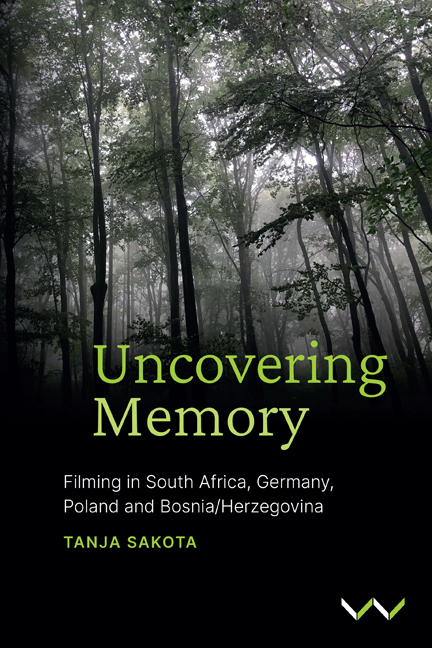Book contents
- Frontmatter
- Dedication
- Contents
- List of Images
- Foreword
- Acknowledgements
- Map of Africa and Europe
- Practice-Based Research, Teaching and Learning
- Part I Working With Students: Cape Town, Johannesburg, Berlin
- Part II Working With Peers: Constitution Hill, Johannesburg
- Part III Working With Myself: Poland, Germany, Bosnia/Herzegovina, South Africa
- Moving Forward
- Film Credits
- Glossary of Terms
- Notes
- Bibliography
- Index
Chapter 4 - Timelines and site-specific research
Published online by Cambridge University Press: 24 November 2023
- Frontmatter
- Dedication
- Contents
- List of Images
- Foreword
- Acknowledgements
- Map of Africa and Europe
- Practice-Based Research, Teaching and Learning
- Part I Working With Students: Cape Town, Johannesburg, Berlin
- Part II Working With Peers: Constitution Hill, Johannesburg
- Part III Working With Myself: Poland, Germany, Bosnia/Herzegovina, South Africa
- Moving Forward
- Film Credits
- Glossary of Terms
- Notes
- Bibliography
- Index
Summary
I use the term ‘timeline’ because it refers directly to my purpose of breaking down the rigidity of linear time and examining the fluidity of time regarding sentiment, feeling, response, sensation and reaction. How does our experience of time relate to our own personal and psychological state? By breaking the rigidity of time we also diffuse the centre and core of what counts as knowledge. If we can have memories of events that we have no direct experience of, then how can we use the camera and film to enable this and allow us access to incredible violence, physical, psychological and emotional cruelty that are essentially invisible?
Memory itself is reliant on time because time is ‘the perpetually measured distance between this moment and the next, between this instant and a past remembered’ (Young 1993, 47). One cannot exist without the other. For this research, the camera is the instrument for knowledge in the same way as time is the instrument for memory. Time is fluid, each nanosecond itself does not have the same duration. Scientifically, according to Einstein's theory of relativity, the speed of each nanosecond varies according to its position and speed with gravity. Time is only constant in a vacuum; in the actual world, the duration of each nanosecond is influenced by size, speed and gravity. My interaction with each space interacts with the relativity of time. As I attempt to access memory in the different scenarios, ultimately I am trying to collapse time. The emotion that accompanies time can make it feel like endless waiting, yet at other times the same duration can feel as if it is flying by. A visual interpretation of what the fluidity of time looks like is encapsulated in Salvador Dali's surrealist painting The Persistence of Memory (1931). The painting consists of three melting clocks in a barren landscape. The clocks, which appear frequently in Dali's work, depict the relativity of space and time. The fluidity of time and memory is part of the research question that forces one to open the spaces that have up to now been closed in an embodiment of time and memory. The aim is to interact with the time–space continuum and shift along the timeline of past, present and future.
- Type
- Chapter
- Information
- Uncovering MemoryFilming in South Africa, Germany, Poland and Bosnia/Herzegovina, pp. 39 - 46Publisher: Wits University PressPrint publication year: 2023



